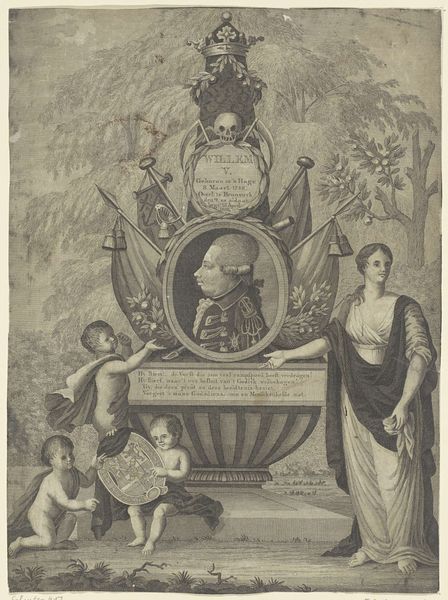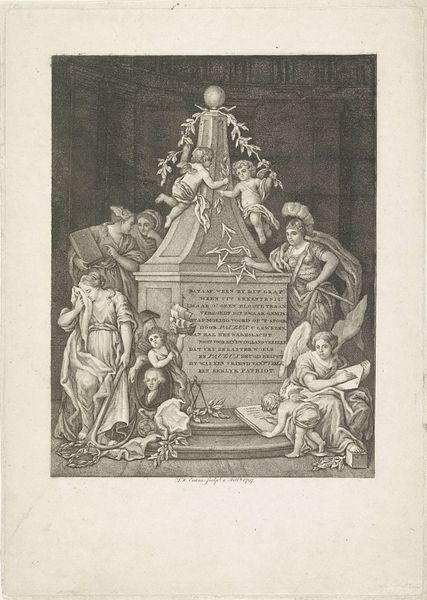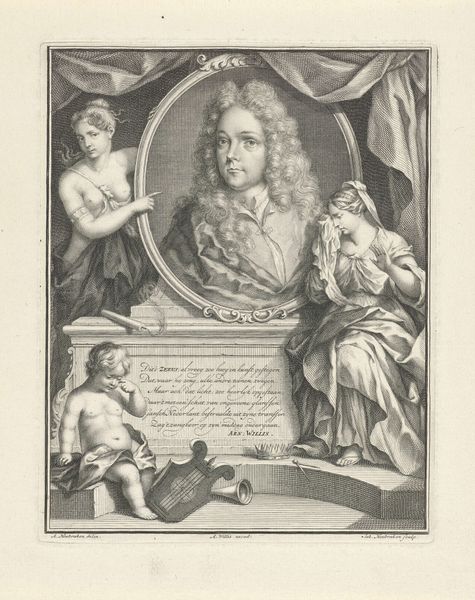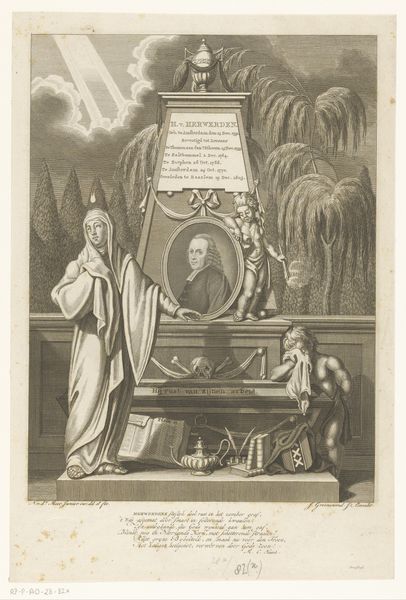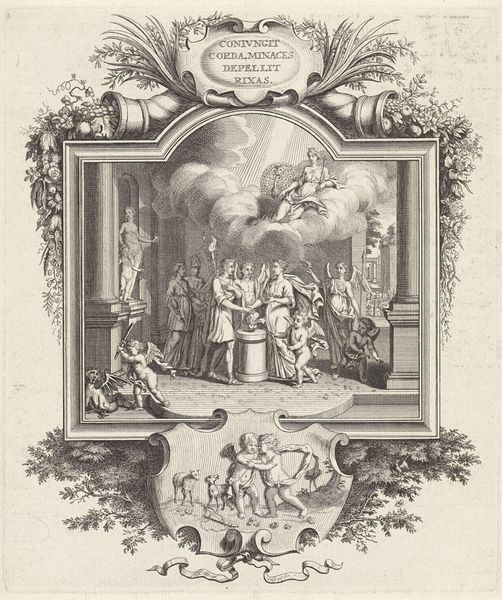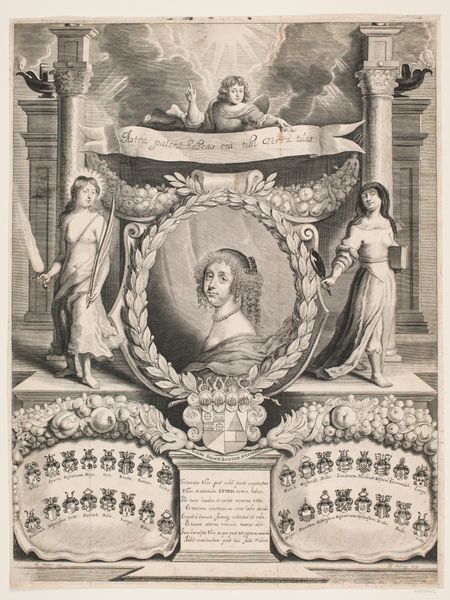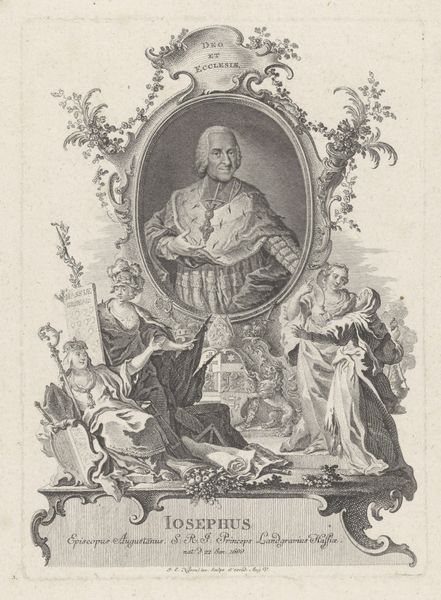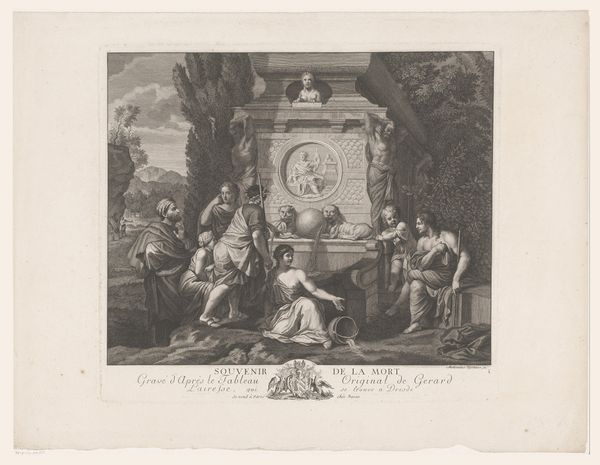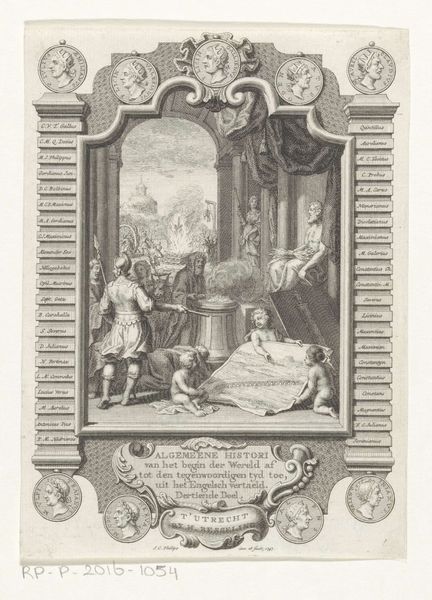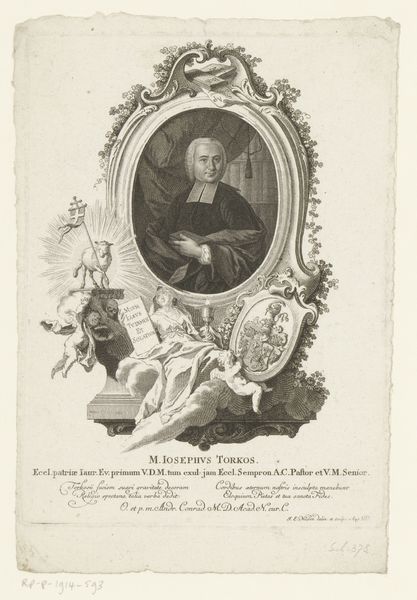
Herdenkingsmonument voor Adolf Frederik van der Scheer 1811 - 1813
0:00
0:00
jangerritszvisser
Rijksmuseum
print, engraving
#
portrait
#
neoclacissism
#
allegory
# print
#
romanticism
#
history-painting
#
engraving
Dimensions: height 295 mm, width 242 mm
Copyright: Rijks Museum: Open Domain
Curator: This print, entitled "Herdenkingsmonument voor Adolf Frederik van der Scheer," was created between 1811 and 1813 by Jan Gerritsz. Visser. As the title suggests, it’s a memorial piece for Adolf Frederik van der Scheer, made with engraving techniques. Editor: My first impression is that it’s incredibly theatrical! The allegorical figures feel poised in a stage play, and the stark contrasts lend a heightened drama to a somber theme. I'm seeing romanticism at play, yet it feels neoclassical in structure. Curator: Precisely! It is rooted in neoclassicism. We can see its allegorical references, like the angel, classical female figures, and cherubic figures representing virtues, mourning around the portrait of Van der Scheer. History painting and romanticism also overlap here, revealing the monument within its historical context. Visser blends visual traditions. Editor: Yes, and how interesting it is to observe how cultural and political powers converge. The traditional, yet idealized depictions of loss seem to promote particular interpretations, masking the underlying realities of power within 19th-century Dutch society. Even in grief, narratives of status are preserved. Curator: True. The visual language emphasizes order and reason and reinforces established values and norms of the time. Visser also places Van der Scheer in this historical, religious, and moral lineage, reinforcing those social hierarchies in the era. Editor: I can't help but wonder, how accessible were these commemorative prints to the wider population? Perhaps it also speaks volumes about our contemporary relationship with memorials, and how our interpretations of these pieces are constantly shifting with social consciousness. Curator: An important question, especially in reflecting upon the role art takes within our lives. I appreciate how it reminds us of the complex layers embedded in any historical artwork. Editor: Exactly, art provides the material and immaterial evidence. It is such a privilege to examine it.
Comments
No comments
Be the first to comment and join the conversation on the ultimate creative platform.
